BIRDS
20 Penguin Facts That Will Make You Love Them Even More
Published
8 months agoon
Shutterstock
Penguins are among the most fascinating and beloved creatures on Earth, captivating the hearts of people worldwide with their unique charm and resilience. These flightless birds, primarily found in the Southern Hemisphere, are marvels of adaptation, thriving in some of the harshest environments on the planet. From their remarkable swimming abilities to their intricate social behaviors, penguins exhibit a range of extraordinary traits that make them truly remarkable. In this article, we’ll explore 20 amazing facts about penguins, shedding light on their diverse species, impressive survival strategies, and the challenges they face. Join us as we dive into the world of these incredible birds and discover what makes them so special.
Aquatic Birds

Shutterstock
Penguins are flightless birds that are highly adapted for life in the water. Their wings have evolved into flippers, making them excellent swimmers. They can glide effortlessly through the ocean, using their flippers to steer and accelerate. Despite their inability to fly, penguins are incredibly agile and swift in their aquatic environment.
Diverse Species

Shutterstock
There are 18 different species of penguins, each with unique characteristics and habitats. From the tiny Little Blue Penguin, which is the smallest species, to the majestic Emperor Penguin, the largest, penguins vary greatly in size and appearance. These species inhabit a range of environments, from the icy shores of Antarctica to the temperate coasts of South America, Africa, Australia, and New Zealand. This diversity showcases the penguins’ remarkable adaptability to different climates and conditions.
Southern Hemisphere

Shutterstock
Penguins are primarily found in the Southern Hemisphere, inhabiting regions from Antarctica to the equatorial coasts. Their habitats include the frozen landscapes of the Antarctic, the rocky islands of the sub-Antarctic, and the temperate beaches of South America, Africa, and Oceania. Each species is uniquely adapted to its specific environment, whether it’s the extreme cold of the Antarctic or the milder climates of the southern continents. This geographical distribution highlights the penguins’ evolutionary success across a variety of habitats.
Speedy Swimmers

Shutterstock
Penguins are incredibly fast swimmers, reaching speeds of up to 22 miles per hour (35 kilometers per hour). Their streamlined bodies and powerful flippers allow them to navigate swiftly through the water, evading predators and catching prey. This speed is essential for their survival in the ocean, where they spend most of their lives. Penguins’ swimming abilities are a testament to their adaptation to an aquatic lifestyle.
Deep Divers

Shutterstock
Emperor Penguins are renowned for their remarkable diving abilities, capable of reaching depths over 1,800 feet (550 meters). These deep dives allow them to access food sources that are unavailable to other predators. They can hold their breath for more than 20 minutes, a feat that demonstrates their exceptional adaptation to underwater foraging. This incredible diving capability ensures they can thrive in the harsh and competitive Antarctic environment.
Social Birds

Shutterstock
Penguins are highly social animals, living in large colonies called rookeries that can consist of thousands of individuals. These colonies provide safety in numbers, helping to protect against predators. Within these social structures, penguins engage in communal activities such as hunting and nesting. The social nature of penguins is crucial for their breeding success and survival.
Unique Mating Rituals

Shutterstock
Many penguin species have unique mating rituals that include elaborate courtship displays and gift-giving. For example, some penguins present pebbles to their potential mates as a form of courtship. These behaviors help strengthen the bond between mates and ensure reproductive success. The rituals vary among species, showcasing the diversity of penguin behavior.
Monogamous Pairs

Shutterstock
Most penguin species form monogamous pairs for at least one breeding season, and some, like the Emperor Penguin, may mate for life. These strong pair bonds are essential for successful rearing of chicks. Both parents share responsibilities, such as incubating eggs and feeding their young. Monogamy in penguins ensures coordinated and efficient care for their offspring.
Chick Rearing

Shutterstock
Penguin parents take turns incubating their eggs and feeding their chicks. In some species, such as the Emperor Penguin, the male balances the egg on his feet and covers it with a flap of skin called a brood pouch to keep it warm. This method of incubation is crucial in the harsh Antarctic climate, where temperatures can drop drastically. The shared parenting duties ensure the survival and well-being of their young.
Adapted to Cold

Shutterstock
Penguins have a thick layer of blubber and tightly packed, oily feathers that provide excellent insulation against the cold. This unique adaptation allows them to thrive in some of the harshest environments on Earth. Their feathers are waterproof, helping them stay dry and warm while swimming in icy waters. The combination of blubber and specialized feathers ensures penguins can withstand freezing temperatures.
Countershading

Shutterstock
Penguins have a distinctive black and white coloration called countershading, which provides camouflage while swimming. Their dark backs blend with the ocean depths when viewed from above, while their white bellies match the bright surface when seen from below. This natural camouflage helps protect them from predators in the water. Countershading is a vital adaptation for penguins’ survival in their aquatic environment.
Long Journeys

Shutterstock
Some penguin species undertake long migrations to reach their breeding grounds. The Emperor Penguin, for instance, treks up to 70 miles (113 kilometers) across the ice to find a suitable nesting site. These arduous journeys are a testament to their endurance and determination. Migration ensures that penguins can breed in environments that are optimal for their chicks’ survival.
Playful Nature

Shutterstock
Penguins are known for their playful behavior, often seen sliding on their bellies across the ice, a movement called tobogganing. This playful activity is not only fun but also an efficient way to travel across the ice. Penguins’ playful nature extends to social interactions within their colonies, where they engage in games and activities. Their playful behavior contributes to the strong social bonds within penguin communities.
Feather Density

Shutterstock
Penguins have more feathers per square inch than any other bird species, which helps keep them warm and dry in harsh conditions. These densely packed feathers provide excellent insulation, trapping heat close to their bodies. Additionally, the feathers are coated with oil that repels water, further enhancing their waterproofing. This high feather density is crucial for penguins’ survival in cold and wet environments.
Communication Skills

Shutterstock
Penguins use a variety of vocalizations and body language to communicate with each other. These include braying, trumpeting, and head-bowing, each serving different social and reproductive functions. Communication is vital for coordinating activities within the colony, such as feeding, mating, and chick rearing. The complex communication skills of penguins reflect their highly social nature and need for cooperation.
Diet Variety

Shutterstock
Penguins primarily eat fish, squid, and krill, with their diet varying significantly depending on their species and location. This dietary flexibility allows them to exploit different food sources in their environment. Their hunting techniques are adapted to the types of prey available, whether it’s diving deep for fish or scooping krill near the surface. A varied diet ensures that penguins can thrive in diverse marine ecosystems.
Natural Predators

Shutterstock
Penguins face threats from natural predators such as leopard seals, orcas, and sea lions in the water. On land, their eggs and chicks are vulnerable to birds like skuas and giant petrels. These predators pose significant risks, but penguins have developed various strategies to evade them, including swimming at high speeds and nesting in large colonies for protection. Understanding their predators helps us appreciate the challenges penguins face in their environments.
Climate Change Impact

Shutterstock
Penguins are particularly vulnerable to climate change, as warming temperatures and melting ice can affect their breeding and feeding grounds. Changes in sea ice patterns can impact the availability of their prey, leading to food shortages. Additionally, rising temperatures can disrupt their breeding cycles and reduce the survival rates of chicks. Protecting penguins requires addressing climate change and preserving their habitats.
Longevity

Shutterstock
Penguins can live for 15 to 20 years in the wild, with some species, like the Emperor Penguin, living even longer. Longevity in penguins is influenced by factors such as predation, food availability, and environmental conditions. Older penguins often have higher reproductive success due to their experience and established social bonds. Understanding penguin lifespan helps in conservation efforts to protect these remarkable birds.
Cultural Icons
Shutterstock
Penguins have become cultural icons, appearing in numerous films, books, and documentaries. Their unique charm and resilience captivate people around the world, making them popular subjects in media and literature. Penguins’ appeal extends beyond their natural habitats, inspiring conservation efforts and public interest in wildlife. Their cultural significance highlights the deep connection humans have with these fascinating birds.
Conclusion

Shutterstock
Penguins, with their unique adaptations and captivating behaviors, continue to fascinate and inspire us. These resilient birds demonstrate incredible survival skills, whether navigating the icy waters of the Antarctic or thriving in temperate coastal regions. By understanding and appreciating their remarkable traits and the challenges they face, we can better support conservation efforts to protect their habitats. Penguins remind us of the beauty and complexity of nature, urging us to cherish and preserve our planet’s diverse wildlife. As we conclude our exploration of these amazing creatures, let’s commit to safeguarding their future for generations to come.
More Amazing Animals+
-
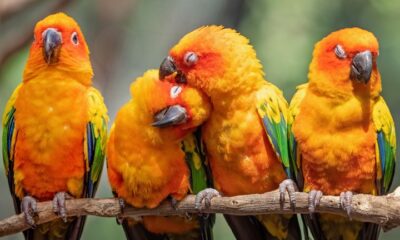

18 Stunning Parrot Species You Have to See to Believe
-
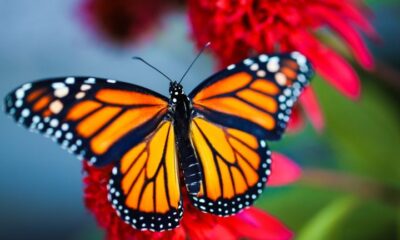

25 Facts About Monarch Butterflies And Their Remarkable Migration Journey
-
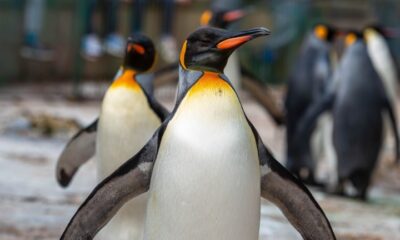

Why We Love Penguins
-
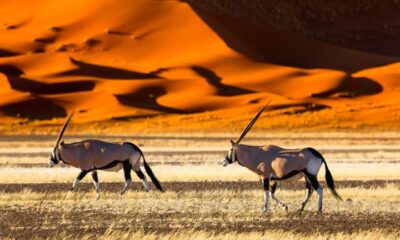

24 Wildlife Conservation Sanctuaries Around The World
-
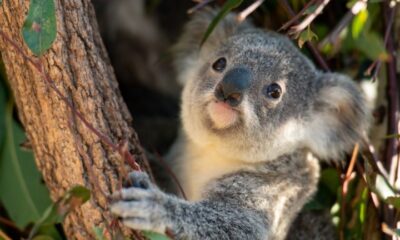

26 Animals That Have The Cutest Babies
-
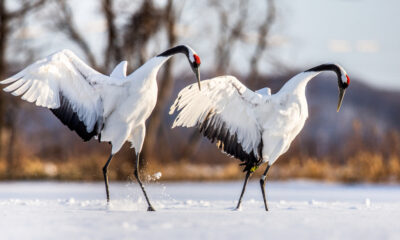

Cranes Are More Interesting Then You May Think, Here Is…
-
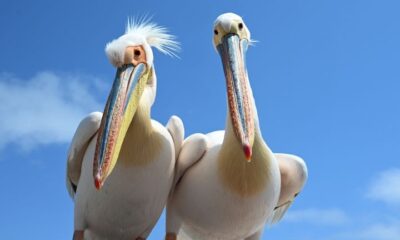

20 Things You Never Knew About Pelicans – Nature’s Fishing…
-
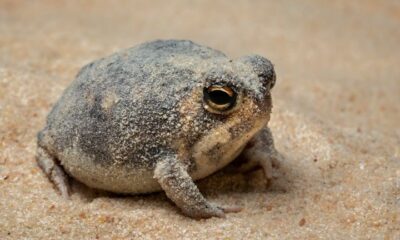

27 Animals That Live In The Most Extreme Conditions
-
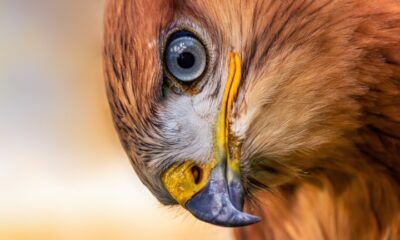

Hawk Yeah! 26 Facts About The Best Birds
-
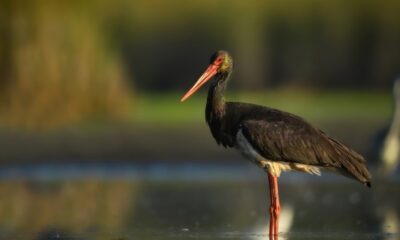

The Truth About Storks and Baby Deliveries
-
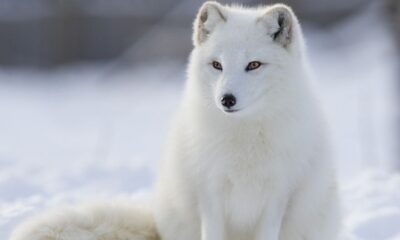

30 Most Beautiful Animals on the Planet
-
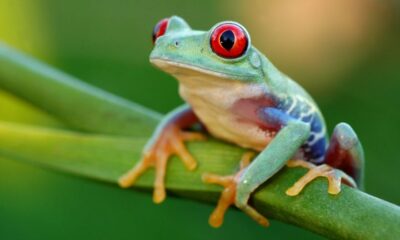

30 Most Unusual Rainforest Animals
